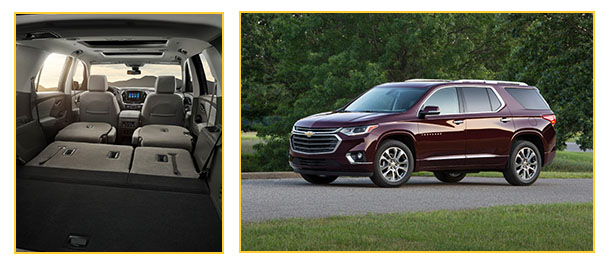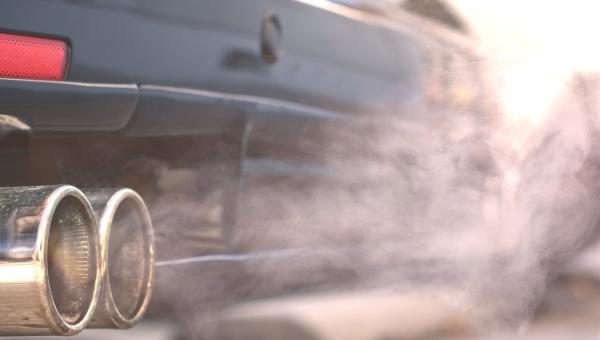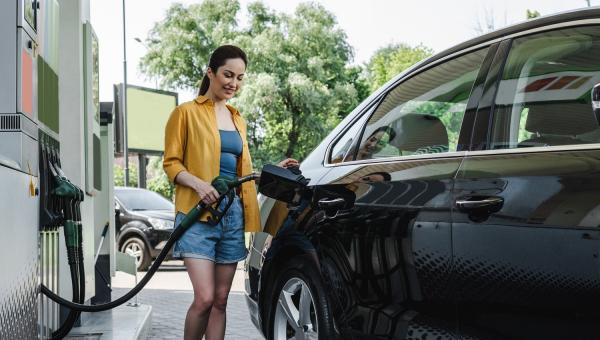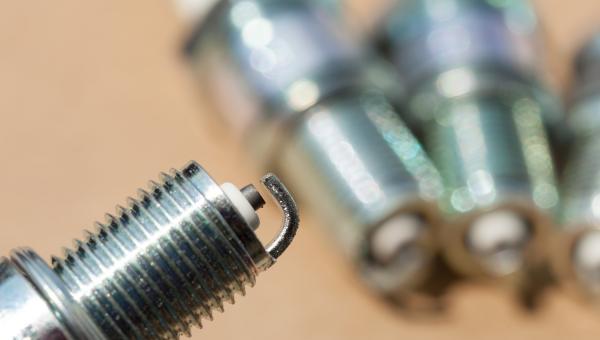Test Drive Notes Library
-
 Pros
Pros
- Forget about the Tahoe. Unless you regularly travel with a family of draught horses, you’ll be much happier with Chevy’s Traverse than you will with its older, truckier Tahoe. While similar in size, the Traverse feels totally up to date, with a more car-like ride, better handling, more comfort, more interior room, easier access, and better fuel economy.
- Interior room. Room is copious. Even if you’re a fat bastard, you’ll find the front seats give you plenty of width. The inside feels large and airy. In our Premier edition test car, the two, separate leather-covered rear seats slide forward and aft to provide business class leg room. So if you’re a tall bastard, and have to ride in the back, you’ll like the Traverse, too. If fact, if you’re any kind of bastard, or not, you’ll probably like the Traverse. And because the middle row of seats slide forward, you can even make room for adults in the third row. The third row seats themselves are low to the ground, and not designed for adults on cross-country treks, but they’re better than a lot of third rows thanks to the optional leg room.
- Practical styling. The rear end is very squared off, rather than raked, like a lot of SUVs these days. That give you maximum room in the back for cargo (and people’s heads, if you’re using the third row of seats).
- Smooth engine and transmission. The Traverse uses GM’s 3.6L V6, which gives it plenty of power. The 9-speed transmission worked perfectly for us, which means, unnoticeably. The engine and transmission do what they’re supposed to do without calling any attention to themselves.
- Stop-start system. We drive more than our share of test cars whose stop-start system (which turns the engine off and then on automatically at stoplights) is annoying enough to make us turn it off. The system on the Traverse is the smoothest we’ve ever experienced. When you remove your foot from the brake, many cars restart with a shudder, a shake, or a small jolt. The Traverse restarts itself undetectably. Every manufacturer should go out and rent a Chevy Traverse with the 3.6L engine and experience how smooth the restart is on the stop-start system. That’s what you’re shooting for, guys.
- Smooth ride. Smoothes out the potholes.
- Video rear view mirror. This is the first time we’ve used a video rear view mirror, and it was a revelation. Rear view mirrors have been getting less and less useful over the years, with rear headrests, stylized (read: small) rear windows, and enormous D pillars blocking your view. They’re almost vestigial now. Well, now you can skip right over all that stuff in the way and have a great, clear, wide view of everything behind you thanks to a camera that you monitor on your rear view mirror. The view is clear and crisp, even at night. It’s wider than what you get in a traditional rear view mirror, and — you’ll have to trust us on this — it gives you a much cleaner, clearer view of what’s going on behind you. The only downside is that you can no longer use the rear view mirror to see if you have spinach between your teeth. But otherwise, this thing is fantastic.
- Good suite of safety features. Our Premier trim Traverse came standard with blind spot monitoring, rear cross traffic alert, lane departure warning, the video rear camera, and a surround view camera which is useful (necessary?) for parking. For a modest $475, you’d be well advised to opt for the “Driver Confidence II” package, which includes most of the other good stuff: forward collision warning and low speed emergency braking. High speed emergency braking, which we also strongly recommend to buyers of new cars these days, is, unfortunately, is only available on the highest trim “High Country" Traverse.
- Good ergonomics. Controls are easy to understand and use. Heating and ventilation is simple and clear. The touch screen is intuitive and includes Apple Car Play and Android Auto. There are volume control buttons on the backside of the steering wheel, right where you index and middle finger naturally rest (which we love). The shift lever is the old reliable center shifter— no trendy mistakes.
-
 Cons
Cons
- It’s big. All that interior room has to fit inside something. And it’s a big something. Be prepared to take a pass on some otherwise desirable parking spots that you’ll have to reluctantly leave for the Honda CR-V behind you.
- Heavy. Once the Traverse gathers momentum, it likes to keep going. It’s 4,500 pounds. Brakes are good, but you need to be prepared to use them and insist that it’s time to stop. Handling is good and easy overall, especially for its size. But there is some body roll on any kind of sharp maneuvering.
- Shifting delay. This little glitch made us glad we were wearing our brown pants a couple of times during our weeklong test drive. Let’s say you make a three point turn. You bang a left-hand u-ey, you stop a few feet before the parked car on the other side of the street, you shift into Reverse, take your foot off the brake and step on the gas to go backwards. And the car keeps rolling forward! So you slam on the brake again, and just after you do, the car kicks into Reverse. I suppose you’d get used to pausing and waiting a couple of seconds for the Traverse to engage Reverse, but it was disconcerting with traffic bearing down on you.
- Lots of plastic. There’s a lot of interior room, and a lot of it is covered in plastic. Standards are higher these days, so the old-style plastic tells you this is a workaday vehicle, rather than a luxury car. Even at $46,000.
- Mileage. We got just under 17 mpg overall, in mostly city driving.
Test Drive Notes Library
Get the Car Talk Newsletter
 Pros
Pros Cons
Cons


